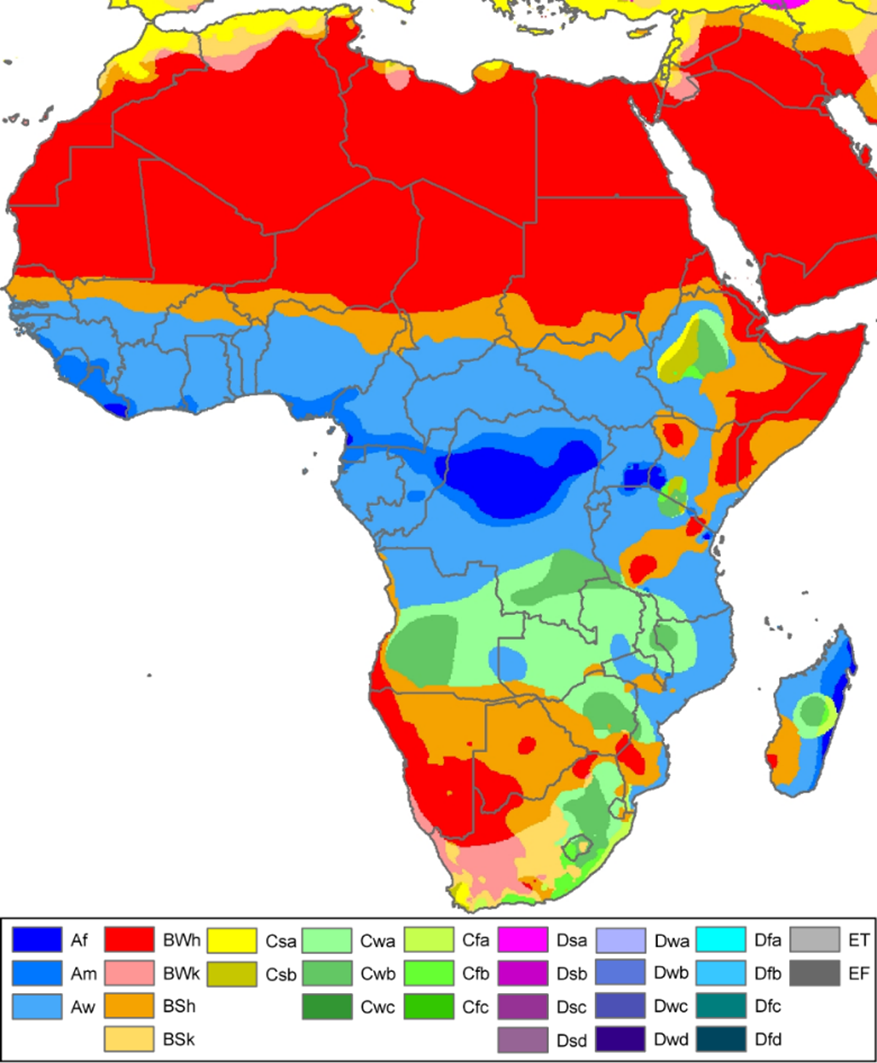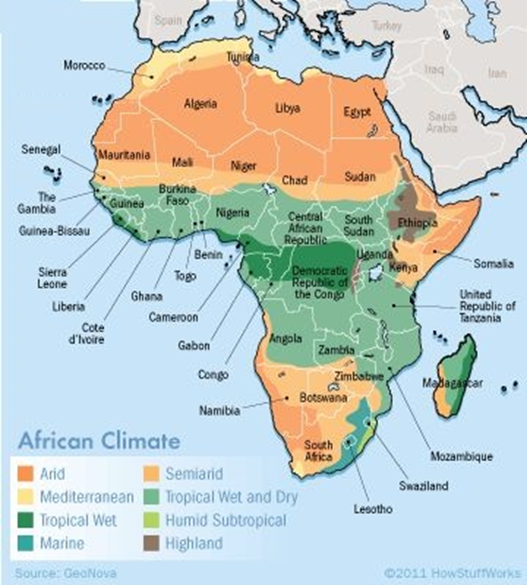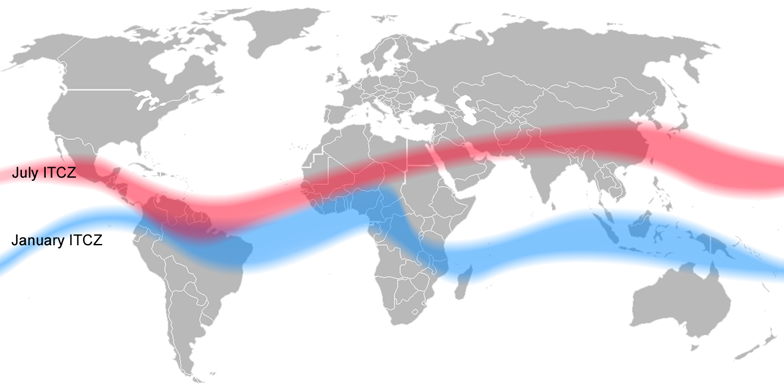Crossed almost in its middle by the equator and included for the most part between the two tropics, Africa is a hot continent, with an average temperature above 21°C nine months out of twelve. The intensity of solar radiation is constantly high. The climates, and the vegetation that corresponds to them, are defined according to rainfall variations rather than thermal variations.
Rainfall is mainly dependent on atmospheric movements occurring in the Intertropical Convergence Zone (ITCZ). The upward movement of moist air brought by the trade winds cools the air and moisture is released in the form of precipitation at the equator. This results in the humid equatorial climate closest to the equator and tropical climates on either side. The dried air then continues towards the northern and southern tropics, which creates an arid climate in these places, around the 20th parallels north and south. This corresponds to the Sahara in the north, and the Kalahari in the south. Deserts and arid plains also prevail in the Horn of Africa.
The lengthening of the dry season, as one moves away from the equator, characterizes the transition from the equatorial climate accompanied by dense forest to the tropical climate, which is accompanied by open forests, then savannahs where the dry season is intense. When the dry season is largely dominant, the savannah takes on a semi-arid character with, nevertheless, an intense but very short rainy season. This is the case in the Sahel, in particular, where the savannah dominates. Then, deserts appear near the tropics.
Finally, the Mediterranean climate characterizes the coasts of North Africa and the southern tip of South Africa.
The seasons, alternating between dry and wet seasons, are linked to the annual oscillations of the ITCZ. These oscillations are a major phenomenon for the continent because Africa does not have mountain ranges high and long enough to influence the climate on a large scale. Since most of the continent is under the influence of the ITCZ, Africa is extremely sensitive to its disturbances, particularly in West Africa, even when these disturbances are small. Thus, from one year to the next, the rainy season can vary in duration by up to 30%.
Annual and daily atmospheric temperature amplitudes are low in humid equatorial and tropical climates; they increase as one moves away from the equator and decrease near the coasts. Temperature extremes are much more pronounced on the ground where the temperature can locally exceed 70°C several days a year, without however reaching the world records recorded in the Lut desert or in Mexico. Africa, however, holds the record for hot desert area, in absolute surface area.
The official atmospheric temperature record is 55°C measured on July 7, 1931 in Kebili, Tunisia.
According to a scientific study carried out by several European universities, one in three urban Africans could be exposed to temperatures of around 41°C every day in 2090.
Position of the ITCZ in January (in blue) and July (in red).
For more information :
- https://fr.wikipedia.org/wiki/Portail:Afrique
- https://en.wikipedia.org/wiki/Africa
- https://africacenter.org/
- https://journals.openedition.org/etudesafricaines/
- https://etudes-africaines.cnrs.fr/
- https://journals.openedition.org/etudesafricaines/
- https://www.afdb.org/fr/documents-publications/economic-perspectives-en-afrique-2024



